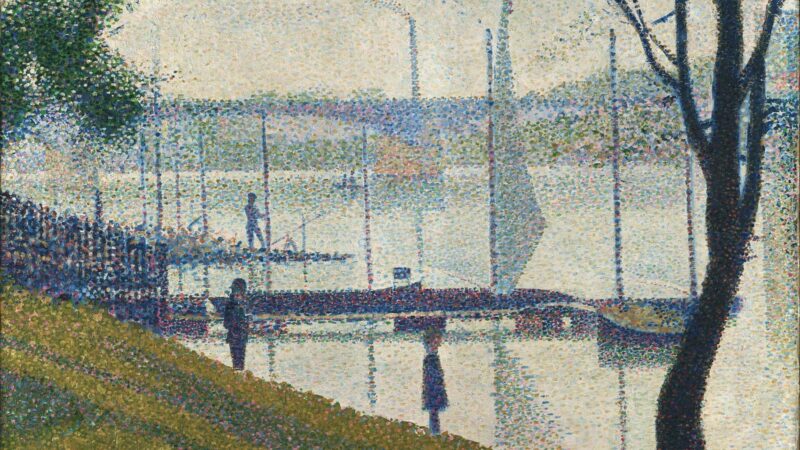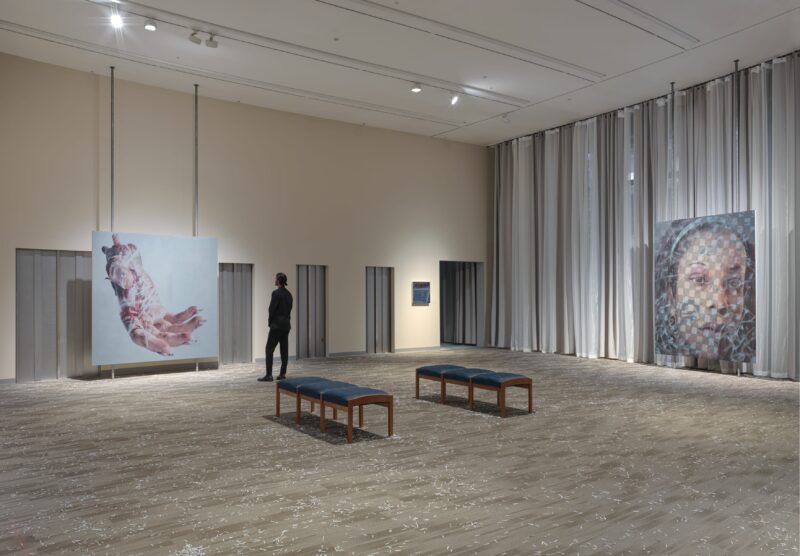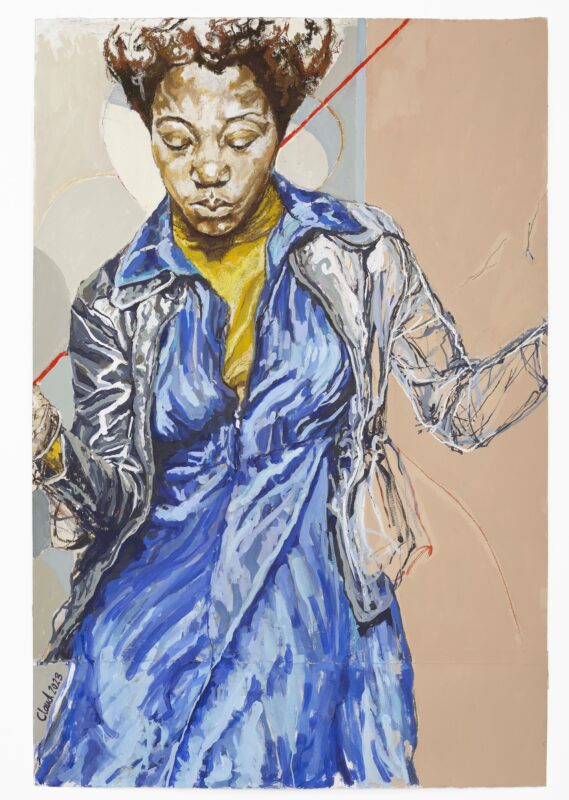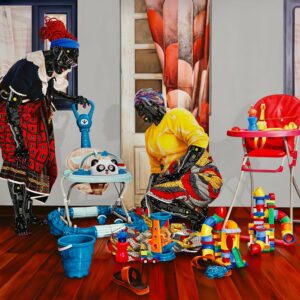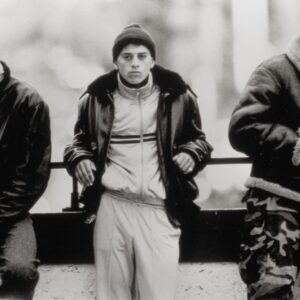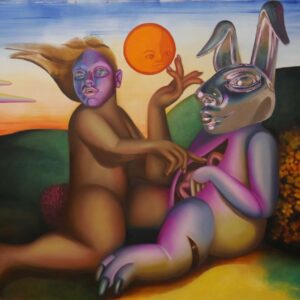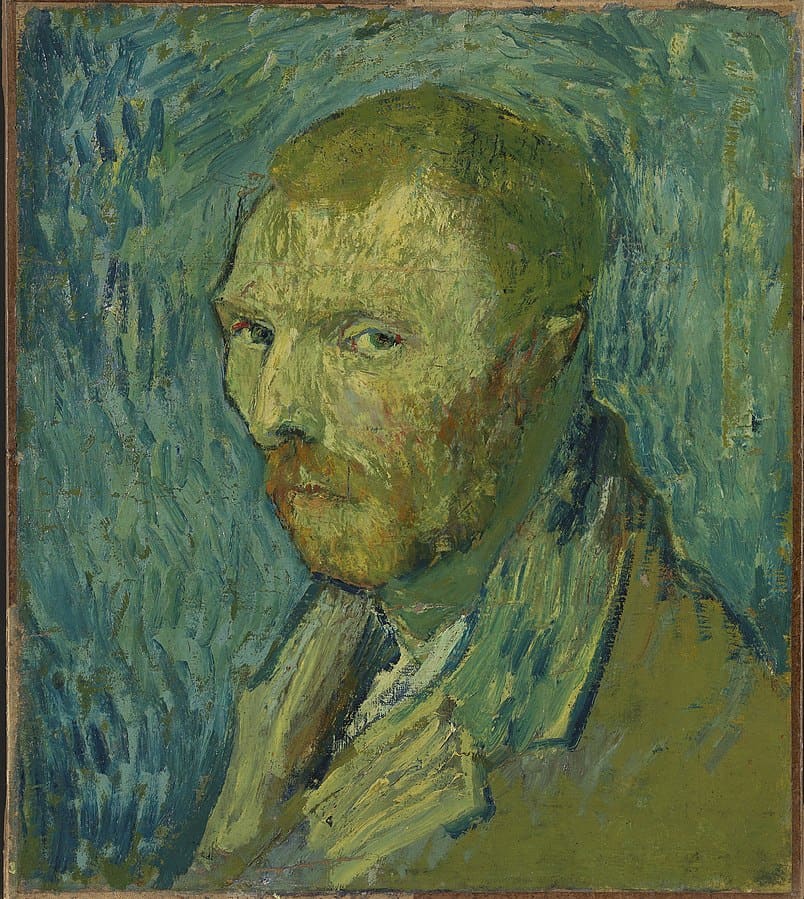
It’s no surprise that sixteen self-portraits by Van Gogh make a great show: with all due respect to Frida Kahlo and Cindy Sherman, I guess it’s a face-off between Van Gogh and Rembrandt for GOAT status in the genre. That might make the Courtauld’s display (‘Van Gogh Self-Portraits’ to 8 May) sound predictable, but on the contrary. Yes, there are frequently seen paintings here, not least the gallery’s own ‘Self-Portrait with a Bandaged Ear’ 1889. But the worldwide loans include several I don’t recall seeing before, even in reproduction, including one only recently attributed definitively to Vincent (top image – Self-Portrait, Saint-Rémy, 1889, the only work that Van Gogh is known for certain to have created while suffering from psychosis). And they demonstrate the extraordinary range of influences and approaches a work in a short period: what we see is almost half of Van Gogh’s total surviving output of 37 self-portraits, all made during 1886-89. Here are four from just eleven months which I’ve characterised, only a little artificially, as using different styles.
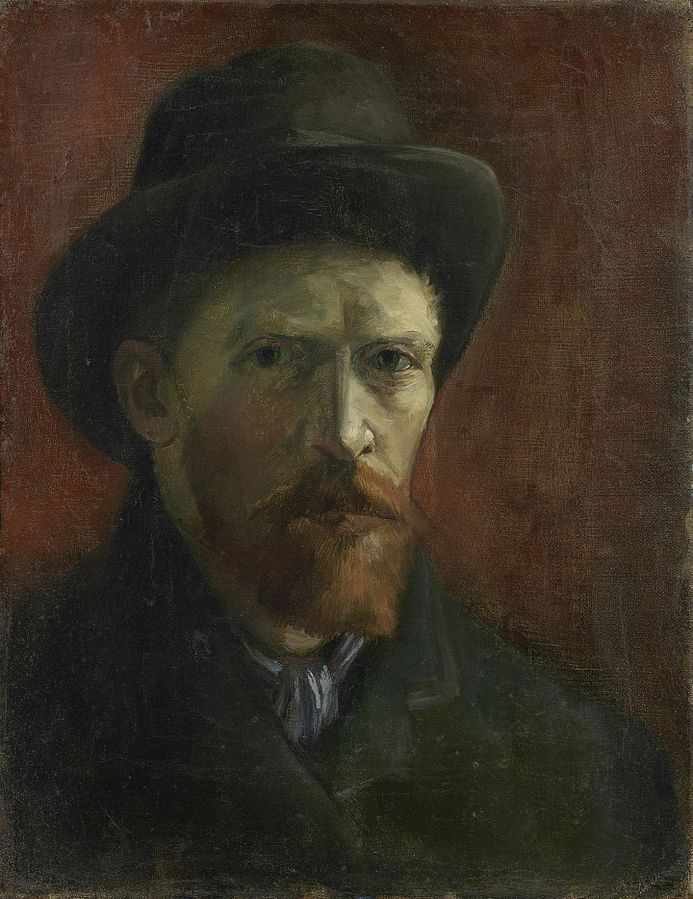
Self-Portrait with Felt Hat, Dec 1886- Jan 87 (Van Gogh Museum, Amsterdam): the earliest work in the show is the darkest and most academic – and effect accentuated by the matte finish – probably from thinning the paint with turpentine – and the relatively formal dress.
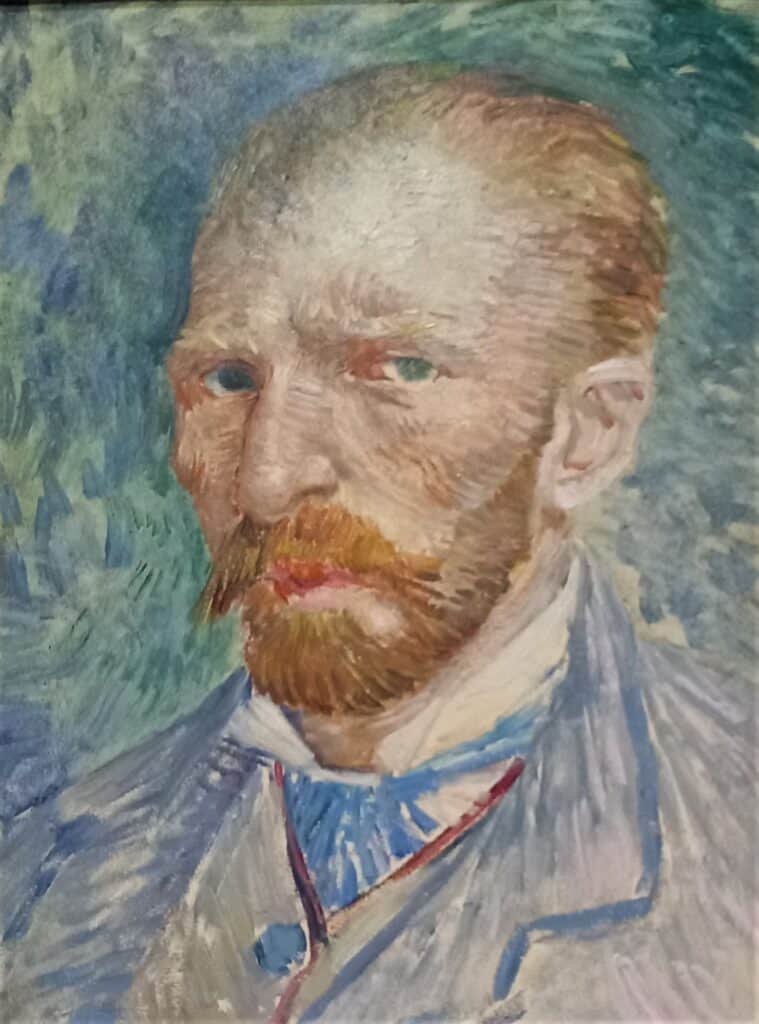
Self-Portrait: Paris, Spring 1887 (Kroller-Muller Museum, Otterlo). A brighter palette – emphasised by the recent removal of yellowed varnish – and more exuberant brushstrokes both attest to the influence of impressionism.
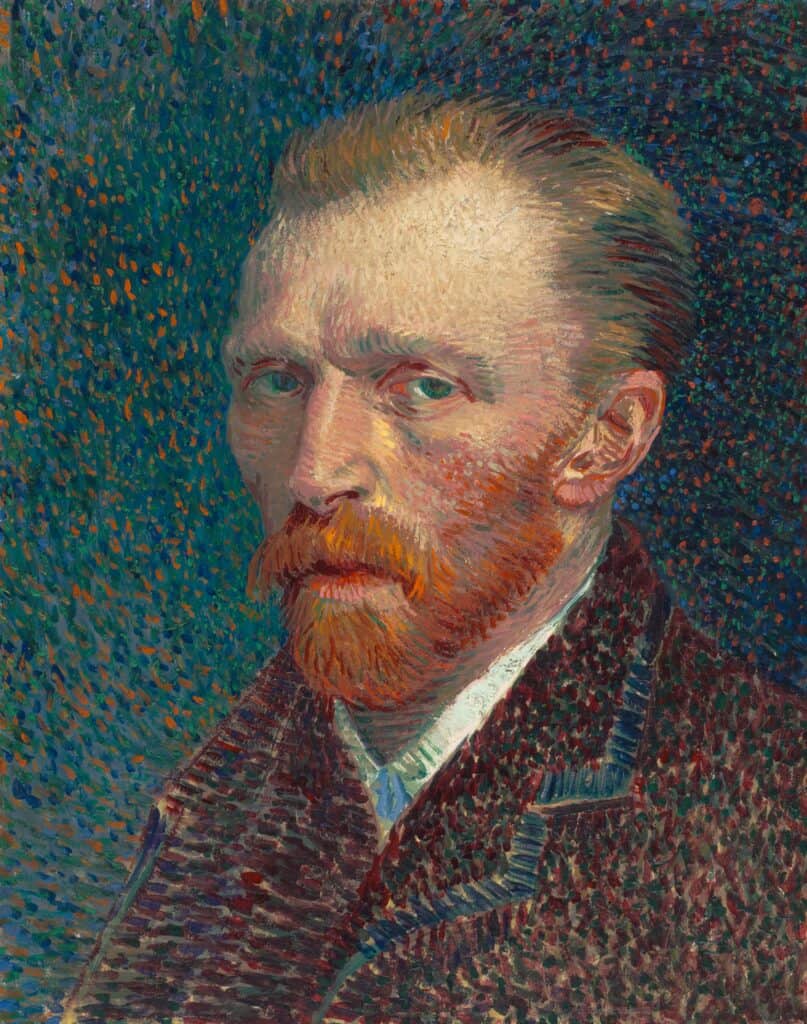
Self-Portrait, spring 1887 (Art Institute of Chicago): here the obvious influence is Seurat, but though Van Gogh uses pointillist colour contrasts, he does so in an instinctive and emotional way rather than with any scientific goal influenced by colour theory.
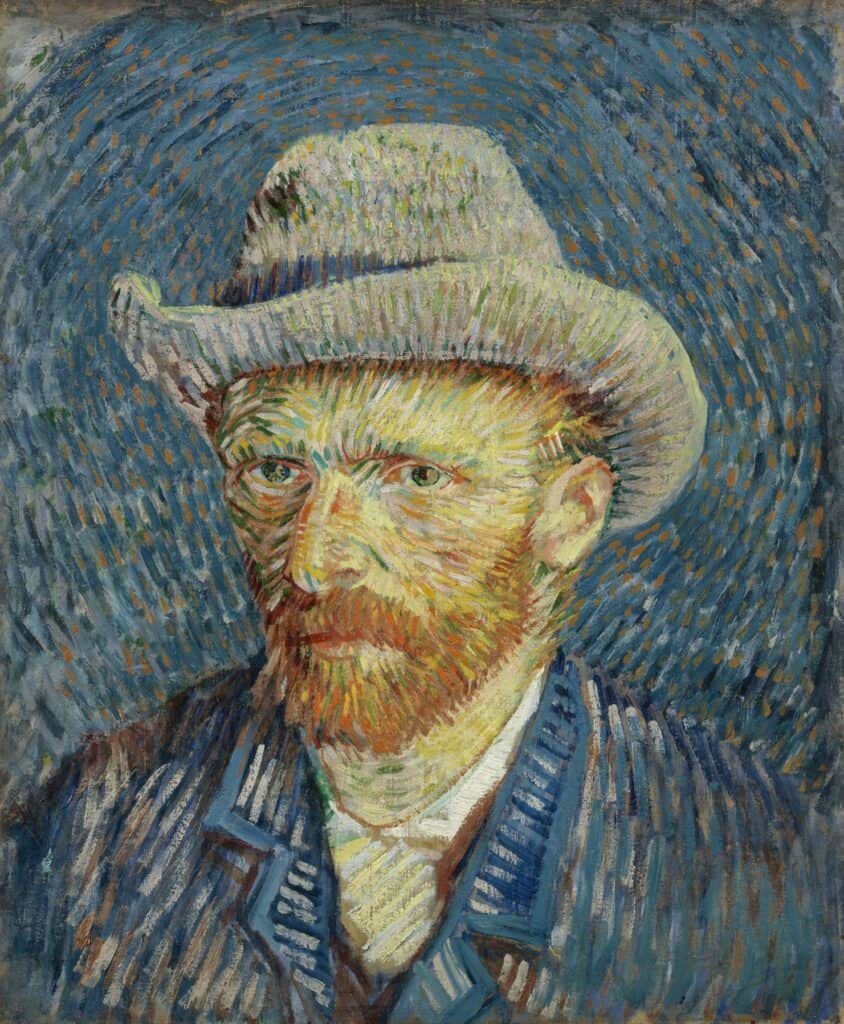
Self-Portrait with Grey Felt Hat, Sept-Oct 1887 (Van Gogh Museum, Amsterdam): There are hints of the future art movements of expressionism and fauvism in how the seething brushstrokes radiate out from the central point of Van Gogh’s nose, and the use of green on the face.
Art writer and curator Paul Carey-Kent sees a lot of shows: we asked him to jot down whatever came into his head

